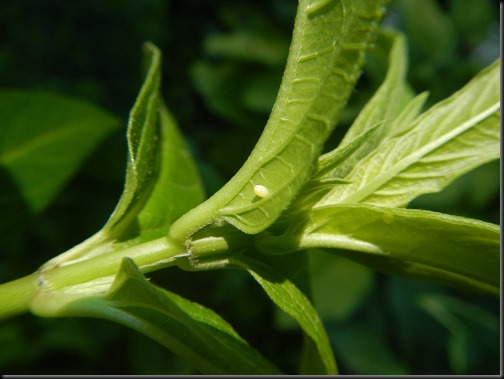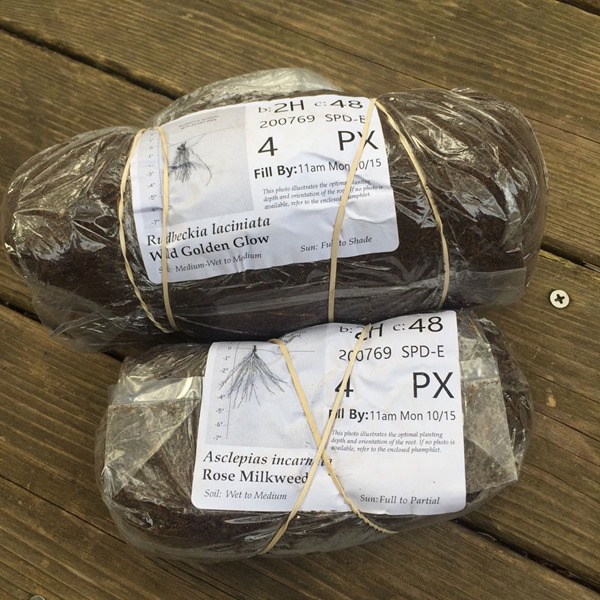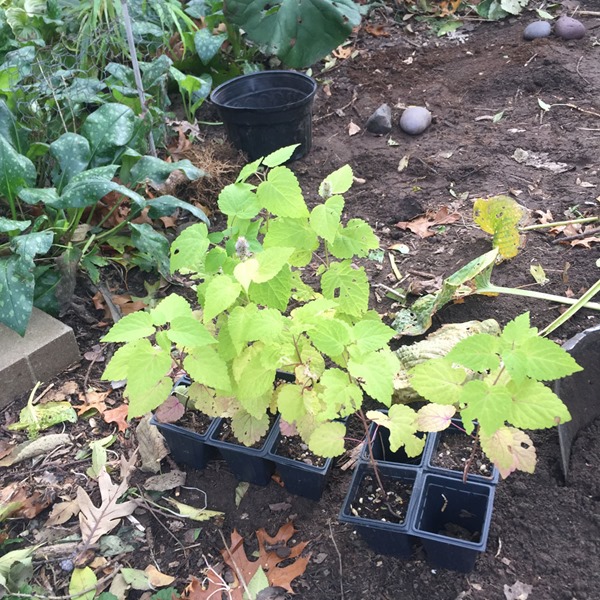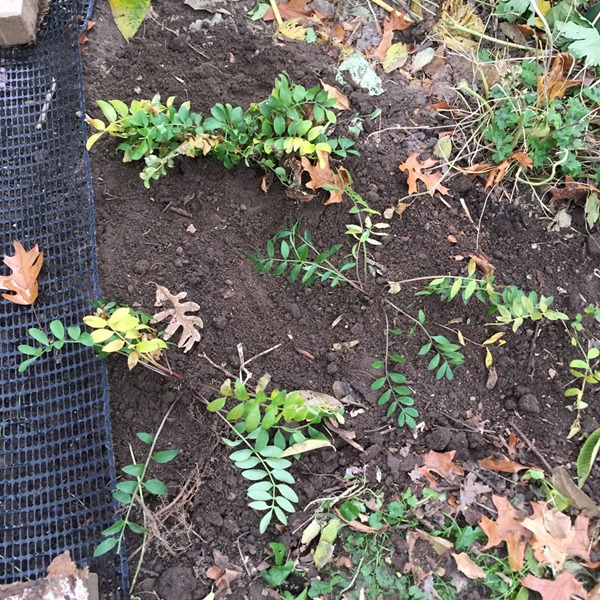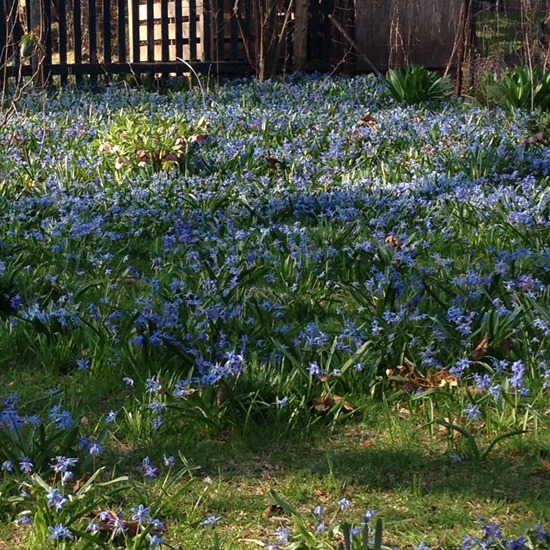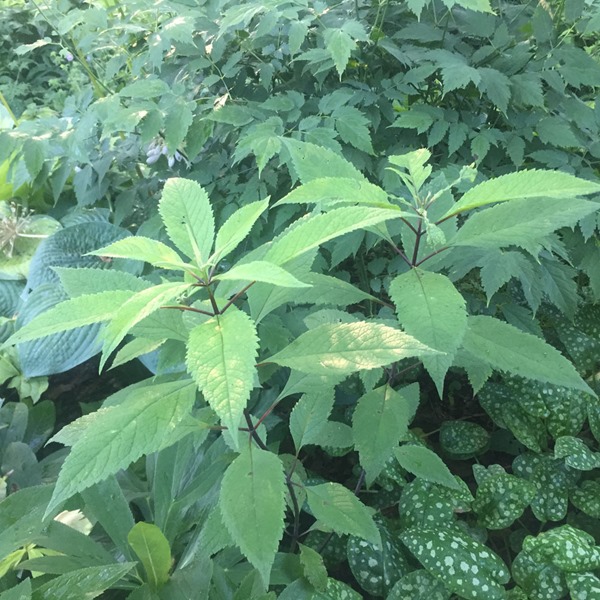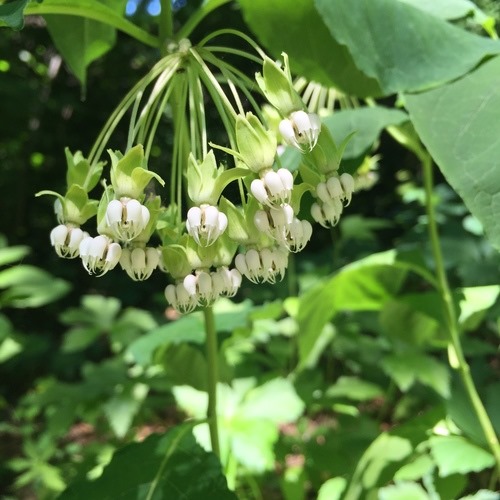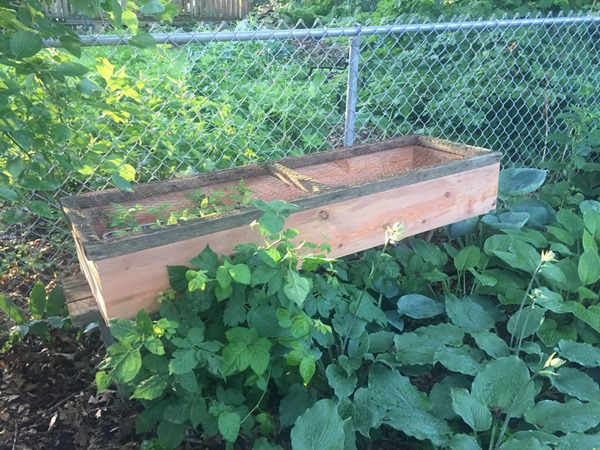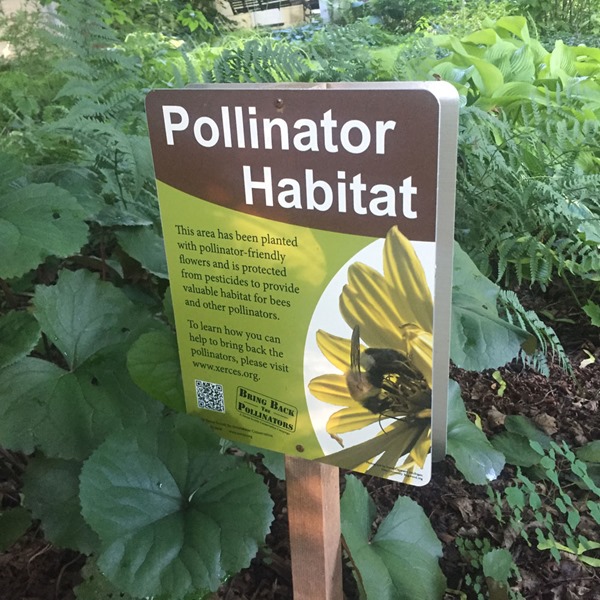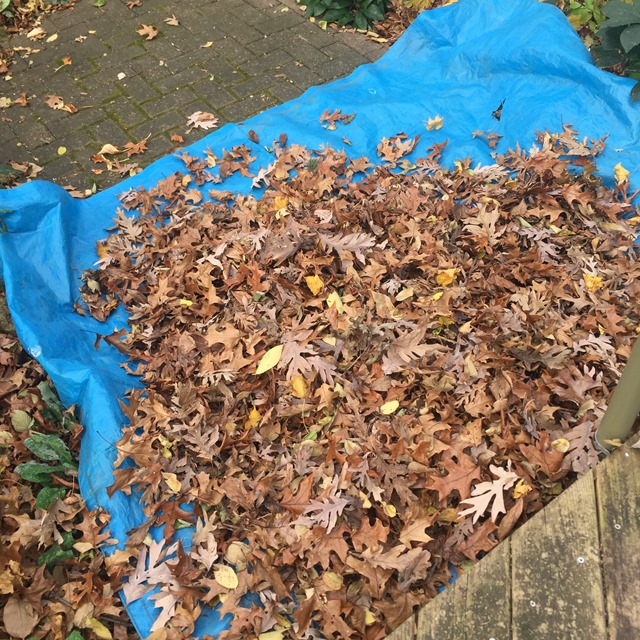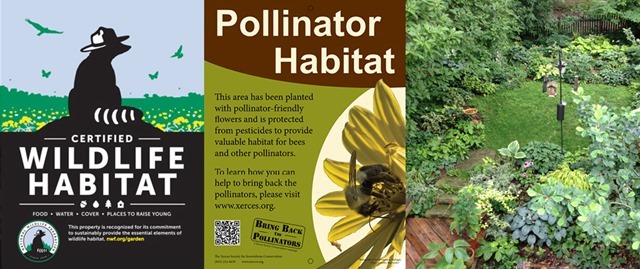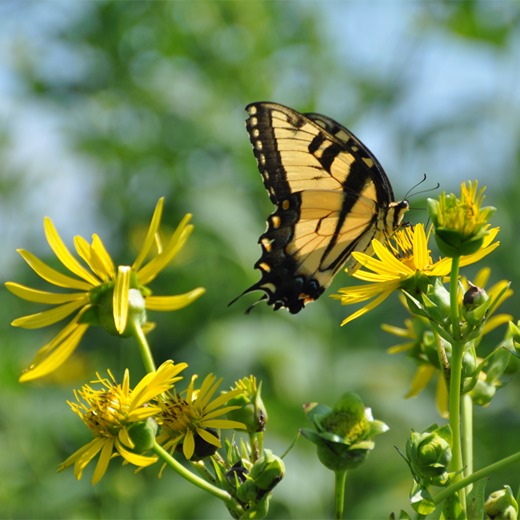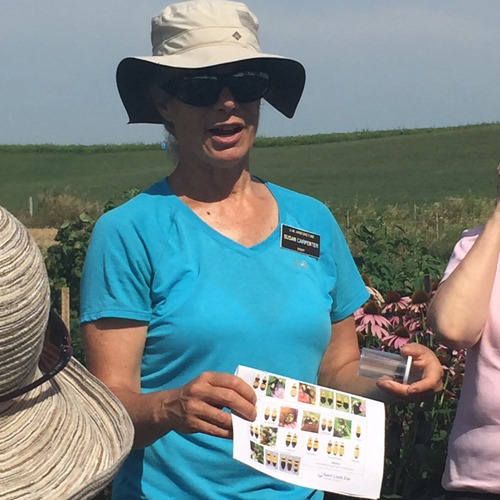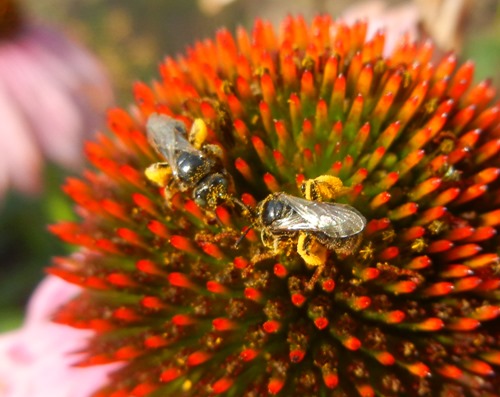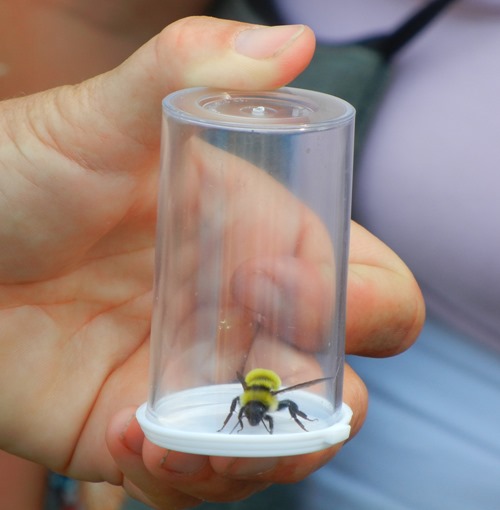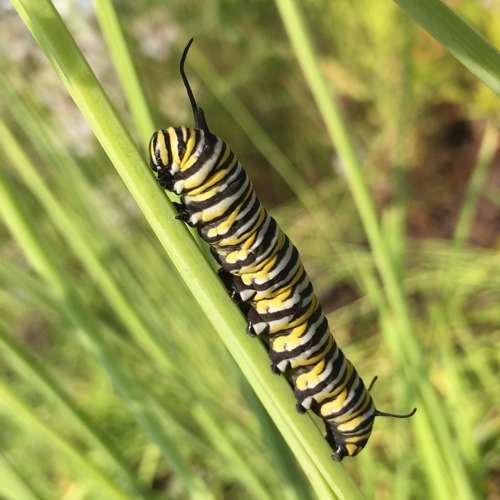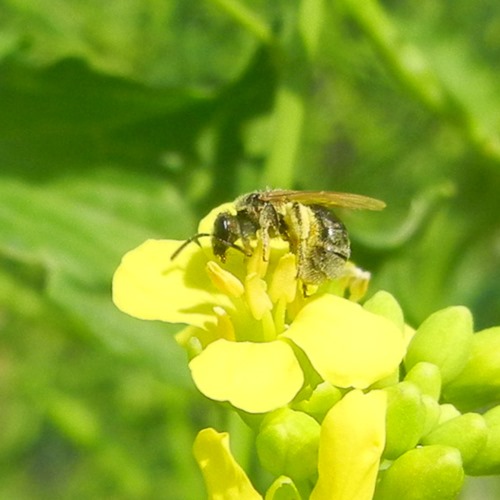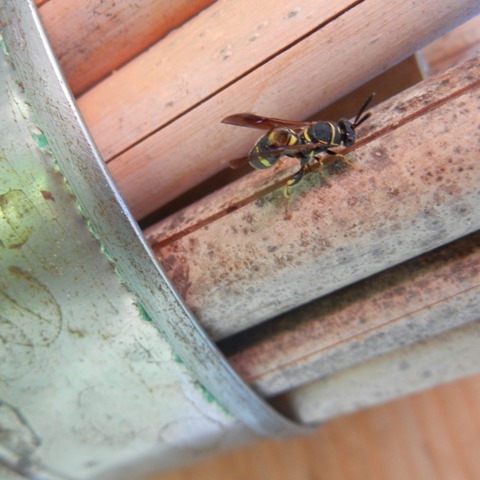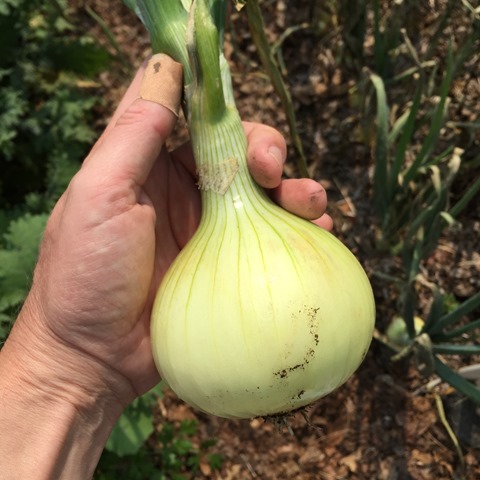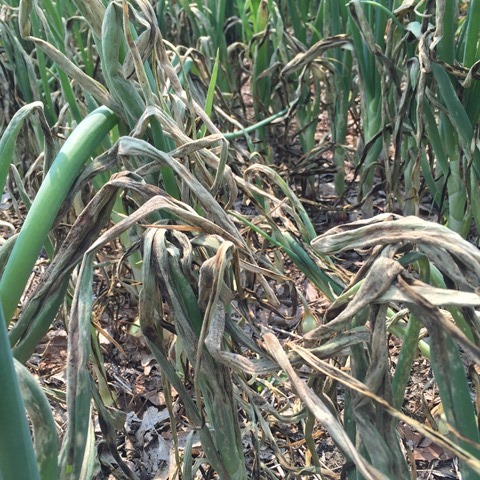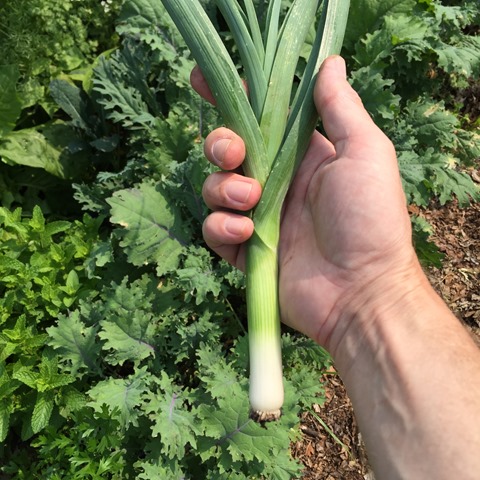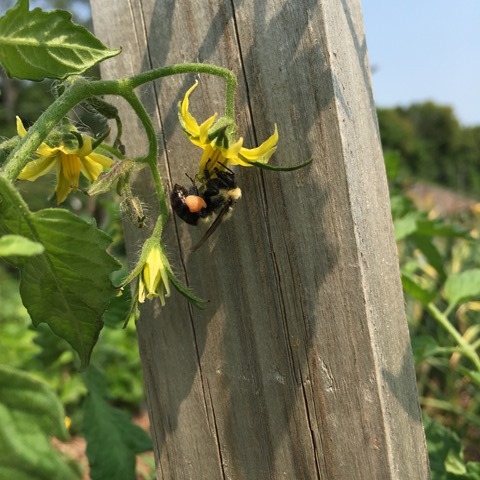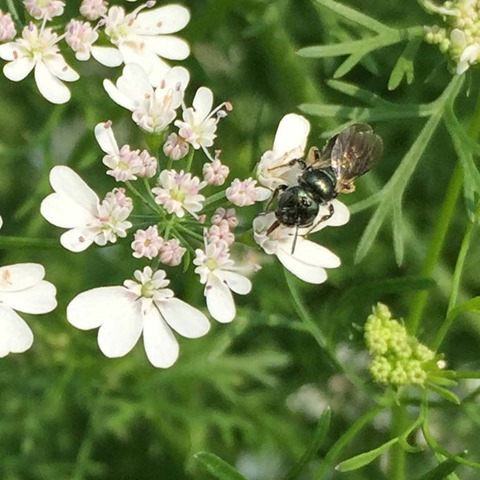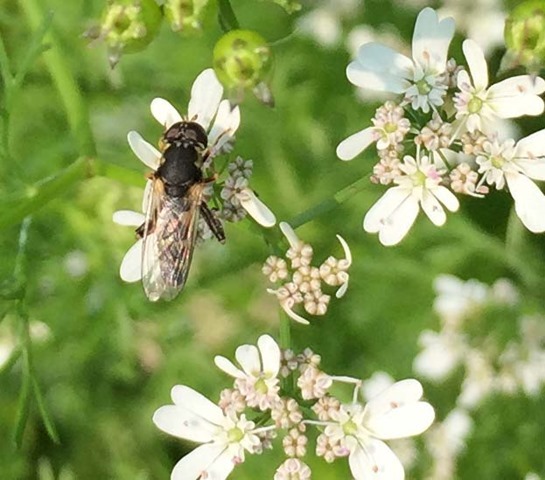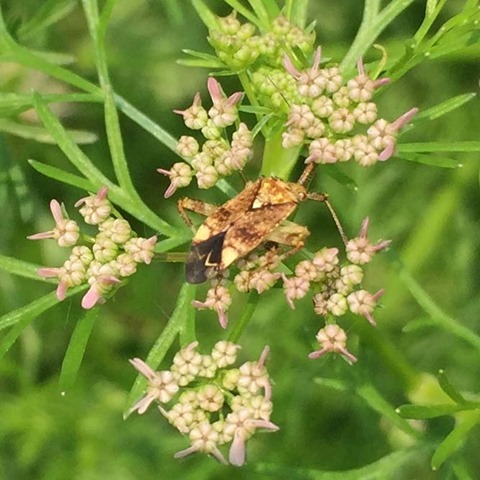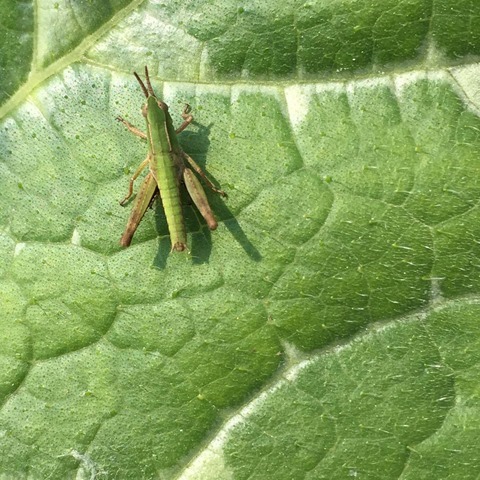
Today was the first time we’ve gone up to our community garden plot this spring. There are a few signs of green besides the occasional weed, including those healthy looking chives. I’ve dropped by a few times over the winter, but today we actually did a little bit of work, mostly clearing away last year’s asparagus stems. We found shoots!

Out of all the plants, I think this might have been the only female and I’m wondering if there’s a correlation between it’s sex and that it’s the first one out of the ground. More likely it’s just the best-protected plant.
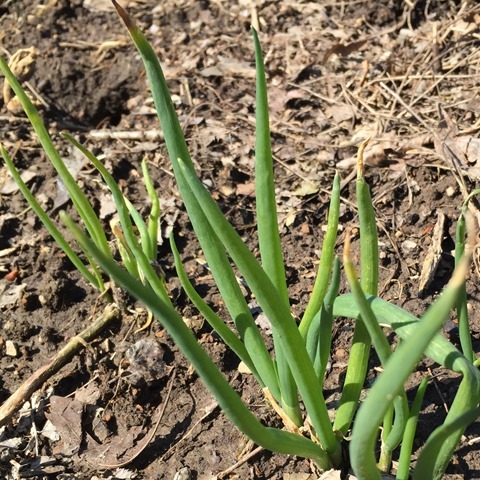
These scallions that I left in last fall are going to be ready to harvest soon. I need to make a note to grow them over the winter again. They’ve done well.

In another Allium area we found the garlic looking great. I did a quick scan of the anal-retentive grid I planted them on and it looks like every bulb I put in survived and has emerged.

This Allium, which I thought might be Korean chives, has come back strong. I am curious to really identify it, if possible, now that I’m reading Around the World in 80 Plants. There are so many edible Alliums! It sounds like even experts have a difficult time telling some of them apart. Which reminds me, back in the perennial garden at home my ramps, a.k.a. Allium tricoccum are up. I hope this year I can get some seed from them.
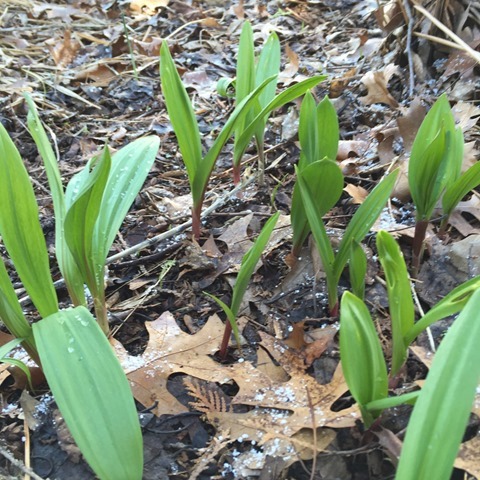
I need to find an unobtrusive way to mark where they are planted so I don’t accidentally dig them up during this summer’s planned garden update. Maybe a circle of stones.
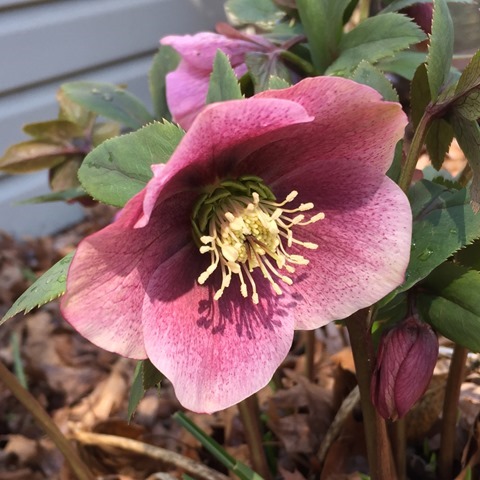
Elsewhere in the perennial garden the hellebores are stealing the show. After yesterday’s on again/off again snow and sunshine—seriously, it was a weird day— I got out to look around and admire a few blooms.
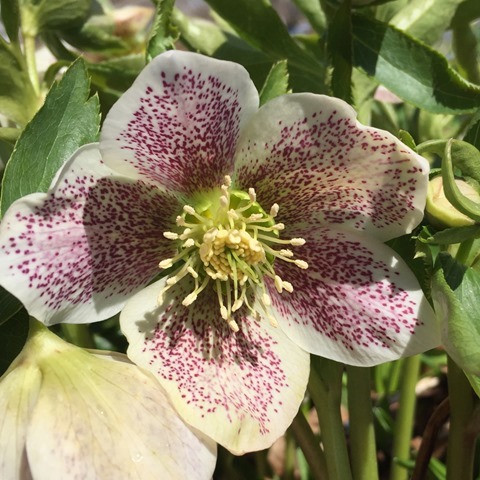
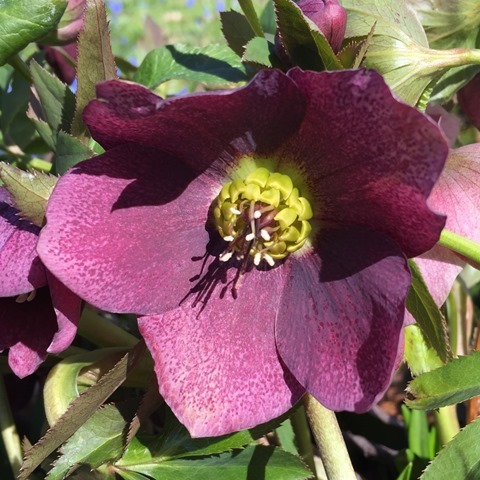
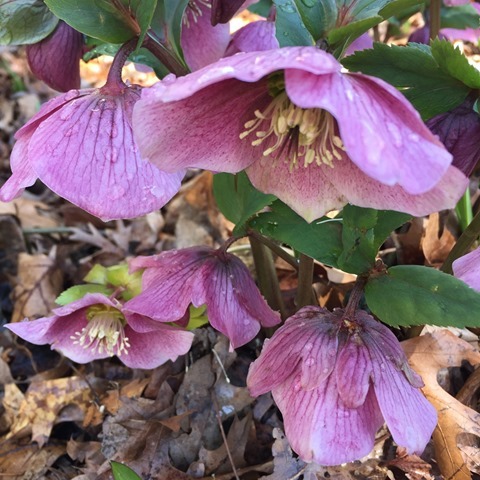
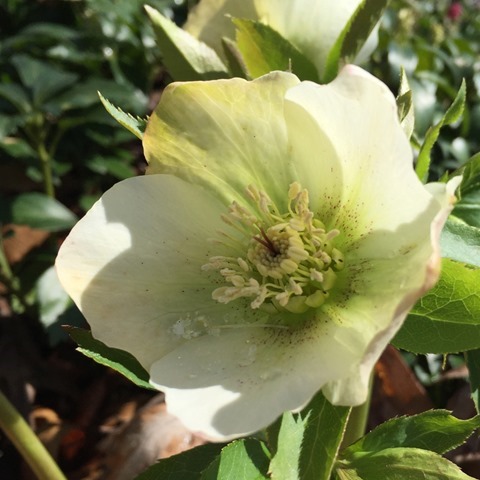
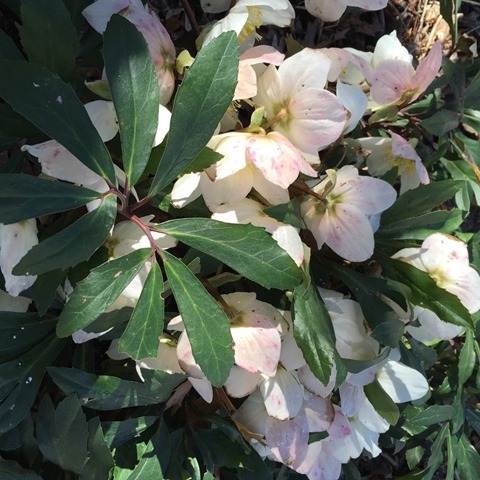
This clump of Helleborus niger var. macranthus is starting to look a little beaten-up. No surprise since it’s been blooming for about a month and has been snowed and sleeted on several times.

The H. niger is under the cherry tree where I replaced the trashed cigar box birdhouse (thanks for nothing, squirrels!) with this one I scavenged from my late father’s shed last fall. There is already some nesting material hanging out of the backyard wren house so I thought I’d better get this one out.
Which brings me to the other animal housing update…

Here are the deserted blocks that, until last weekend supported my beehives. A couple summers ago I discovered the hard way that I’ve developed an allergy to honey bee venom. (The emergency room just over the hill here is very nice.) Since then, I just haven’t felt comfortable around the hives without being fully suited up. Consequently, maintenance of the garden has suffered. I recently made the hard decision to give up the bees and turned them over, along with all my equipment to my beekeeping partner to liquidate. Helen, the last hive I had has survived through two winters so he’s going to attempt to make some splits. They should be rather desirable on the local market. I’m going to miss watching the annual cycle of the hive and caring for the honey bees. They’re fascinating creatures I’ll always appreciate. In their place I’ll be caring to the extent I do to the native bees and other pollinators around my home gardens and in our community garden plot by providing food plants and housing opportunities for them.

The food, of course, includes my nemesis, the dreaded Scilla. I’ve given up trying eradicate it from the back garden and hope just to keep it from invading the front. It’s still a noxious, alien weed in my eyes, but knowing it provides food for so many kinds of bees has changed my opinion of it, but only grudgingly.

